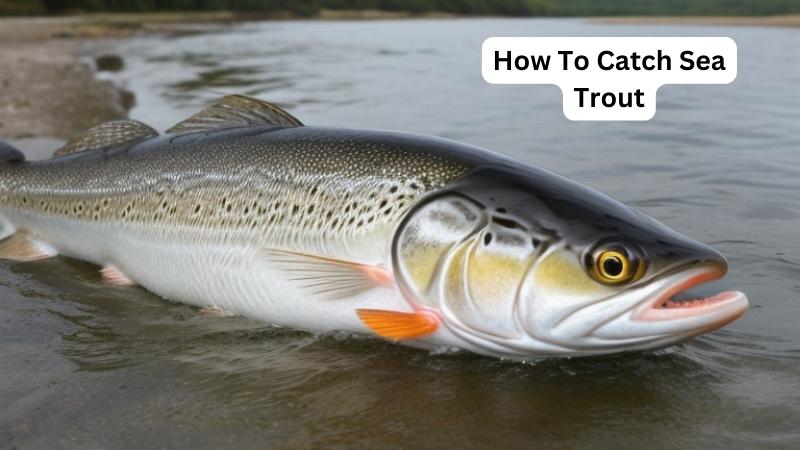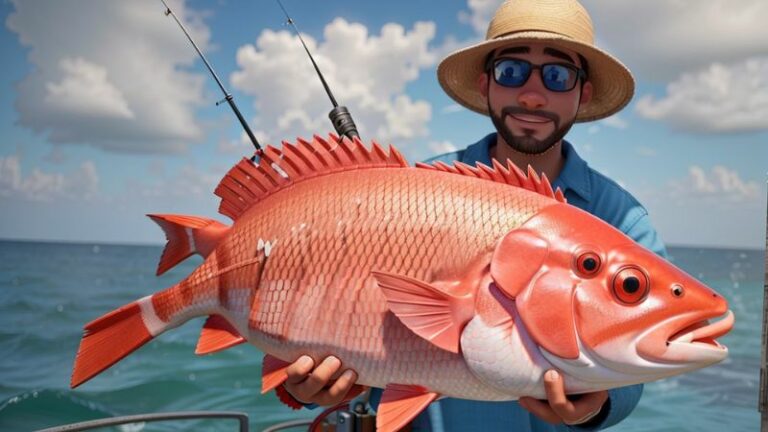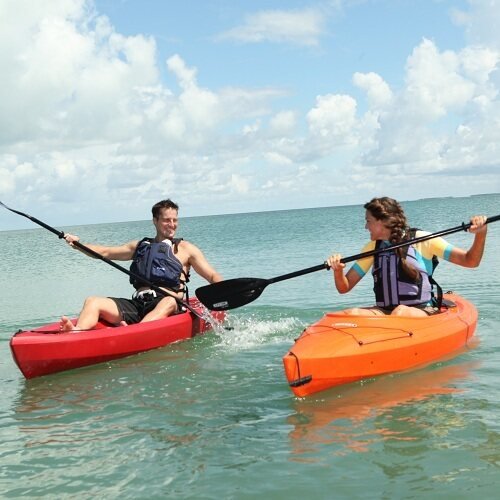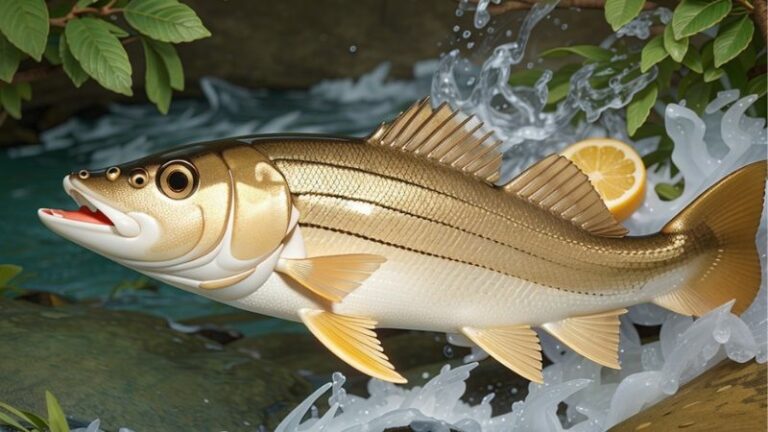How To Catch Sea Trout
Today we discuss How To Catch Sea Trout. Are you eager to learn how to catch sea trout? Well, you’re in for a treat! Whether you’re a seasoned angler or just starting out, this guide is here to help you reel in those elusive sea trout. So, grab your fishing rod and get ready for an exciting adventure on the water!
Now, catching sea trout may seem like a daunting task, but fear not. We’ll walk you through the ins and outs of this thrilling sport, from the best techniques to the essential gear you’ll need. By the end of this guide, you’ll be well-equipped to embark on your own sea trout fishing expedition.
So, get ready to dive into a world of excitement, trying your hand at various fishing methods and exploring beautiful fishing spots. Ready to become a sea trout-catching expert? Let’s get started!
Catching Sea Trout: Tips and Techniques for Success
Sea trout fishing is a popular pastime for many anglers, offering the thrill of the chase and the reward of landing a beautiful and elusive fish. If you’re interested in learning how to catch sea trout, this comprehensive guide will provide you with the knowledge and techniques needed to increase your chances of success. From understanding their behavior to choosing the right equipment and lures, we’ll cover everything you need to know to have a successful sea trout fishing experience.
Understanding Sea Trout Behavior:
To effectively catch sea trout, it’s crucial to have an understanding of their behavior. Sea trout, also known as “salmon trout” or “sewin,” are anadromous fish, meaning they migrate from saltwater to freshwater to spawn. This behavior makes them highly unpredictable and challenging to catch. Sea trout are known for their ability to adapt to different environments, and they can be found in rivers, estuaries, and coastal areas, making them accessible to both freshwater and saltwater anglers.
When it comes to feeding, sea trout are opportunistic predators, primarily targeting small fish, shrimp, and insects. They tend to be more active during low light conditions, such as early morning or late evening. Understanding these feeding patterns and their preferred habitats will greatly increase your chances of success.
To locate sea trout, look for areas with cover, such as submerged structures, fallen trees, or undercut banks. These areas provide the trout with protection and a place to ambush their prey. Also, pay attention to tidal movements, as sea trout often follow the tide to find their food.

The Right Equipment and Lures:
Choosing the right equipment and lures is essential for a successful sea trout fishing trip. When it comes to rods and reels, a medium to medium-light spinning combo is ideal. This setup provides the sensitivity needed to detect subtle bites while still having enough power to handle larger fish.
As for lures, sea trout can be enticed by a variety of options. Some popular choices include spoons, soft plastics, and jerk baits. When selecting lures, consider the size and color that mimic the trout’s natural prey. Experiment with different retrieves, as sea trout often respond to a combination of slow and erratic movements.
When fishing for sea trout, it’s important to have a good selection of lures in your tackle box. Keep in mind that weather conditions and water clarity can affect the trout’s feeding behavior, so be prepared to adapt your lure choice accordingly. It’s also a good idea to have a variety of weights and sizes to cover different fishing scenarios.
Techniques for Catching Sea Trout:
Now that you understand sea trout behavior and have the right equipment, let’s dive into some effective techniques for catching these elusive fish. Here are three tried-and-true methods to increase your chances of success:
1. Drift Fishing: Drift fishing involves casting your lure upstream and allowing it to drift naturally with the current. This technique is great for covering a large area and imitating the movement of natural prey. It’s important to maintain a steady retrieve and keep your lure close to the bottom where sea trout are likely to be feeding.
2. Topwater Fishing: When sea trout are actively feeding near the surface, topwater fishing can be highly effective. Using lures such as poppers or surface walkers creates a commotion on the water’s surface to attract the trout’s attention. The key to topwater fishing is patience and timing. Allow the sea trout to fully commit to the strike before setting the hook.
3. Night Fishing: As mentioned earlier, sea trout are more active during low light conditions. Night fishing can be highly productive, especially during the warmer months. Utilize glow-in-the-dark lures or switch to darker-colored lures that stand out in low light. Focus on casting near structures or areas where sea trout are likely to be lurking in the darkness.
Remember to practice catch and release when targeting sea trout, as they are vital to maintaining healthy fish populations. Always handle the fish with care and return them to the water as quickly as possible to minimize stress and increase their chances of survival.
Choosing the Right Location for Sea Trout Fishing:
1. Research Local Regulations: Before heading out, familiarize yourself with any regulations specific to your fishing location. Some areas may have restrictions on tackle, catch limits, and even fishing seasons. By adhering to these regulations, you can help conserve fish populations and ensure a sustainable fishing experience.
2. Consider the Habitat: Sea trout can be found in a variety of habitats, including rivers, estuaries, and coastal areas. Researching the specific preferences of sea trout in your region can help determine the most suitable fishing spots. Look for areas with structure, such as submerged rocks, fallen trees, or deeper pools, as these are often prime spots for sea trout to seek shelter and feed.
3. Seek Local Knowledge: When in doubt, tap into the local knowledge of experienced anglers or fishing guides. They can provide valuable insights into the best locations, tackle recommendations, and even specific techniques that work well in the area. Local fishing forums and social media groups are also great resources for connecting with fellow anglers and gathering information about popular sea trout fishing spots.
Remember, part of the excitement of fishing is exploring new locations and discovering hidden gems. Be open to trying different spots and adapting your fishing strategies based on the conditions you encounter. With patience, persistence, and the right approach, you’ll increase your chances of landing that prized sea trout.
Key Takeaways – How to Catch Sea Trout
- Choose the right fishing spot with clear water and rocky areas.
- Use light fishing gear and small lures to mimic the sea trout’s prey.
- Cast your line upstream and let it drift naturally with the current.
- Pay attention to tide and light conditions for optimal fishing success.
- Practice patience and be prepared for sudden strikes from sea trout.
faqs for How To Catch Sea Trout:
The best time to catch sea trout depends on the region and the specific species. However, in general, sea trout tend to be more active during the cooler months of the year. Spring and autumn are often considered prime times for sea trout fishing, as the water temperatures are ideal and the fish are actively feeding. It’s important to research the local patterns and consult local fishing reports to determine the best time for your specific area.
Sea trout are known to be opportunistic feeders, so a variety of bait options can be effective. One popular choice is live bait, such as shrimp or small fish. These can be rigged on a hook with a bobber or fished with a Carolina rig. Artificial lures, such as spoons, jigs, and soft plastics, can also be highly successful in enticing sea trout.
When choosing bait, consider the local forage and match it as closely as possible. Pay attention to the size and color of the baitfish in the area and select lures or bait that mimic them. Experimentation can be key, as the preferences of sea trout can vary depending on location and conditions.
One effective technique for catching sea trout is drift fishing. This involves drifting along with the current while casting lures or bait into the water. The drifting motion mimics the movement of natural prey and can be enticing to sea trout. Another technique to try is wading and casting around structures, such as docks, mangroves, and oyster beds. Sea trout often seek shelter and feeding opportunities near these areas.
It’s also important to vary your retrieval speed and presentation. Sea trout may prefer a slow, steady retrieve or a more erratic action depending on the conditions. Pay close attention to how the fish are responding and adjust your technique accordingly.
For sea trout fishing, a medium to medium-heavy spinning rod and reel combo is typically ideal. Look for a rod that is around 6 to 7 feet in length, with a fast or medium-fast action. Pair the rod with a reel that can handle 8 to 12-pound test line. Fluorocarbon leader material in the 10 to 20-pound range is recommended to help prevent line breakage from the sharp teeth of sea trout.
Other essential gear includes a tackle box with a variety of lures and bait, a fishing line, hooks, and a fishing net. It’s also important to have a pair of needle-nose pliers or a hook remover to safely handle any fish you catch. Don’t forget to bring sunscreen, a hat, and polarized sunglasses to protect yourself from the sun and improve your visibility on the water.
If you’re targeting larger sea trout, consider using bigger lures or bait. Larger sea trout are often more predatory and may be attracted to larger offerings. Opt for lures or bait that mimic larger prey, such as mullet or pinfish. Additionally, focus your efforts around areas that provide good cover and easy access to deeper water, as larger sea trout tend to seek out these locations for both safety and food.
Another tip is to fish during low-light conditions, such as early morning or late evening. Larger sea trout are more likely to be actively feeding during these times when they have a predatory advantage. Lastly, be patient and persistent. It may take some time and effort to land a trophy-sized sea trout, but the thrill of the catch is well worth it.
HOW TO CATCH TROPHY SPECKLED TROUT EASY + Nonstop Sea trout Fishing with Tips
Summary
So, to catch sea trout, first, choose the right bait like small fish or shrimp. Then, cast your line near rocks or structures where trout like to hide. Patience is key, as trout can be elusive. Watch your line for any movement or tugs, and be ready to reel in your catch. Remember to keep your noise and movement to a minimum and respect the environment. Happy fishing!
To be successful, make sure to use the right gear and line for sea trout fishing. Keep an eye on the tides and weather conditions, as they can affect the trout’s behavior. Finally, be observant and adaptable, trying different techniques until you find what works best. Enjoy the thrill of catching sea trout and the beauty of being out in nature!



